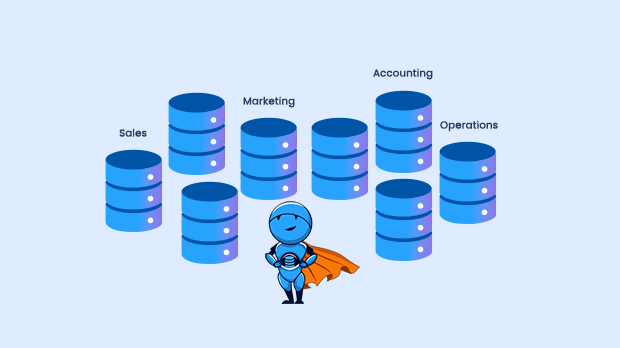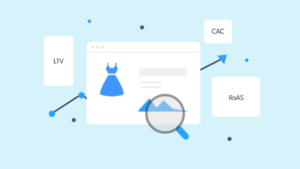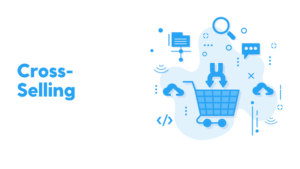As an eCommerce brand, you always look forward to filling orders promptly and maintaining great customer service to provide a trustworthy brand image. Even if several procedures must be followed, integrating systems, especially when it comes to your data, may be the one thing you are still lacking. Silos have emerged as one of the most significant corporate challenges during the past few years. Teams that operate in isolation with no available access to or connection with other groups are known as silos, as are occasionally entire departments. Organizations of all sizes struggle with departmental silos. They are one of the main barriers impeding efficiency, decision-making, and using Big Data, and they stem from a “silo mindset.”
eCommerce suffers from silos. However, organizational silos are less common in eCommerce organizations than in more common data silos. When data silos are destroyed, and real integration takes place, actual efficiency is realized.
What is a Data Silo
A collection of unprocessed data accessible by one department but kept apart from the rest of the company is known as a data silo. As a result, there is a severe lack of trust, effectiveness, and transparency inside that company. This typically occurs because the data is gathered using a business tool that is separate from the rest of your IT environment. Larger organizations frequently have data silos because different teams and departments naturally have their objectives and priorities and frequently work independently.
Why are Data Silos Problematic
Data silos are bad for your business, regardless of why, but why are they so bad? Here are some challenges faced because of Data Silos-
Incomplete Brand Picture
The duty of consolidating all the company’s data falls to C-level executives. The sales team will discuss new clients, marketing can share the number of leads and traffic, and the accounting team will provide you with a summary of costs and profit if you are the executive making the calls. However, what ties all that data together? It is comparable to assembling a jigsaw puzzle without the picture on the box to operate a firm with isolated data. Data silos prevent you from having a comprehensive understanding of your company.
Foster a Less Cooperative Atmosphere Across Business
In the existence of data silos, each team eventually operates autonomously. They only work with the data they have access to, which is all their data. Teams do not work together on projects, which makes it exceedingly difficult for the business to have a shared vision. Managers want to base choices on facts and the leaders of each team will seldom make decisions that align with overall business objectives. This happens due to the presence of data silos as they cannot see the full picture and are only given access to a small portion of the data.
It is exceedingly challenging to sustain a culture of openness and trust in settings where data silos are the norm. Instead, you can create conflict and competitiveness between teams as they concentrate on their micro-goals.
Terrible User Experience
There are often several consumer touchpoints in firms. These contacts occur across various channels and at distinct phases of the buying process. This implies that many departments, including billing, sales, or marketing, will deal with the same customer. When data is isolated, it is easy to lose sight of your customer’s experiences with your business. Nothing makes a consumer more irritated than having to repeatedly tell their story to multiple individuals within the same organization.
Slowed Progress
Data is confined inside teams rather than being immediately streamlined between groups. Teams must thus wait until they recognize they need data they do not already own before locating it inside the business, manually gaining access to it, and analyzing it for their objectives. The information can be outdated when you gather it.
Security Hazard
If adequate security measures are not in place, the business’s security risk grows if employees keep spreadsheets, documents, and other data on their devices. Because it is challenging to determine who has access to what information, data silos also make it challenging to comply with data privacy rules.
Squander Storage
Saving identical material to each employee’s business storage folder would waste valuable storage space. As a result, you spend money keeping data you do not need or desire. If the data were consolidated into a single platform available to all employees inside that firm, it would take up much less space.
Risking Data Accuracy
One of your company’s most significant assets is data. The availability of various methods for gathering data about your partners, clients, and prospects boosts the value of your business. However, the value you may derive from such data decreases noticeably when it is out-of-date, lacking, or both.
As was already said, the isolated data is more likely to become obsolete and erroneous over time, rendering it useless. Each team can also access a copy of the same data. As a result, the statistics tend to benefit the team that possesses them. Working with data silos causes low-quality data since putting these dispersed bits of knowledge together is challenging. Furthermore, when you cross-check the information from several sources, you will undoubtedly notice contradicting facts if your data is not integrated or coordinated.
Benefits of Breaking Down Data Silos
The success of every firm depends on efficient data transfer across divisions. Unfortunately, data cannot be readily transferred from one department to another if your organization employs team-specific apps and software that do not communicate with one another. Such technological silos might be troublesome for your company. Silos produce inefficient processes that may irritate your consumers and wear out your personnel. These inefficient systems range from mistakes and duplicate records to disconnected analytics and lack of team cohesion.
Your operational processes might change if you pick and use the best software for your company. Your productivity and sales will immediately increase if you choose the correct tools.
Makes Teamwork Possible
The typical team employs six methods of cooperation and at least four distinct types of communication technologies (source: HCM Technology). Teams are less likely to exchange information, and data cannot be quickly accessible by other departments when teams utilize different methods to collect data. The inability to grasp the overall picture results in decisions not aligned with overarching corporate objectives, which breeds dissatisfaction and erodes team trust.
Provide Superior Client Service
Businesses that employ a patchwork of tools and systems do not receive a complete picture of their clientele. Data silos prevent 69% of businesses from offering a complete, single customer perspective. You use many applications for data management, reporting, SMS messaging, email marketing, and other functions. If your platforms cannot communicate with one another, it is hard to follow customer behavior and preferences. As a result, your sales, marketing, and support teams cannot provide customers with personalized answers to their inquiries.
Expand Your Company
Cutting out technology Teams can effortlessly communicate data across company functions thanks to silos. But no matter what department you work in, you can provide consumers with the relevant information at the right point in their journey by taking a more comprehensive approach to handling customer inquiries.
This will increase consumer faith in your brand and dispel any lingering questions about your company’s ethics that may otherwise arise from a segmented strategy for handling customer inquiries. This translates into greater conversions and quicker business growth since customers will be more loyal to your brand and trust you to provide a high-quality service than they will to the competitors.
By replacing all their applications with functionality and streamlining customer care at every touchpoint, we assisted a well-known online retailer of country clothes. In the post-pandemic period, when other comparable e-commerce businesses have struggled due to the reopening of physical retail stores, our client has maintained a healthy conversion rate thanks to smart lists for improved segmentation, automated follow-ups, and dynamic content based on user preferences.
Quit Copying Work
Teams that operate in silos are not aware of existing solutions to challenges, which can lead to repeated efforts to resolve recurring problems. Additionally, it may result in erratic choices that tarnish your reputation.
Get your organization’s employees to use centralized software and applications to access cross-functional knowledge sharing. This will speed up the diagnosis, fixing issues and provide staff members with a broader awareness of organizational expertise they may use when necessary to improve how they manage and interact with customers. As a result, your staff will be more effective, there will be less chance of work being done twice, and your company will spend less money.
You can make playbooks to describe centralized procedures so that everyone is aware of them and can contribute. As a result, employees feel appreciated and are more motivated to achieve when they are involved in creating systems and procedures.
Offer Better Analytics and Reporting
A centralized hub of data from many teams and departments may be obtained by removing the obstacles to seamless data movement, which is another advantage of minimizing technological silos. The result is an extremely rich data set that influences your long-term growth plan and helps you make smarter decisions.
Keep Compliance Difficulties at Bay
It is more challenging for management teams to implement uniform security measures when data is kept on various platforms and applications, such as spreadsheets. As a result, it becomes simple for hackers and dangerous online criminals to find vulnerabilities in your network and steal or use your data. You may adopt strong security measures, lower the risk of a data breach, and improve compliance with privacy and protection regulations with the use of a centralized data storage system.
Increased Productivity and Saving Money
Data sharing may be difficult and involves a lot more email communication and administrative work when your tech platforms are not interconnected. Managers claim their employees lose up to 20 hours per month using solutions that are not centralized or integrated throughout the organization, according to HCM technology.
Thanks to Saras Analytics, your sales, marketing, operations, and customer care teams can exchange information on one platform. Teams will be more productive because of having fewer administrative duties to accomplish, which will save time and result in cost-saving efficiencies.
Teams can make notes on tasks and send notifications and alerts to their coworkers in different departments. Tasks can be automated, lowering the need for intervention and the possibility of human mistakes. Your customer care team’s workloads will be made more straightforward as a result, and staff retention and satisfaction will also increase.
Breaking Down Silos: Marketing Solutions
When you are aware of the detrimental effects that data silos have on your company, you are prepared to investigate potential solutions. These methods will help you begin merging your data.
Alter Business Culture
It takes more than simply having mechanisms in place to collect data to break down silos. Additionally, you need the knowledge and support of those who utilize data at all levels of your company. If the corporate culture does not change, team members might quickly re-establish silos even if you employ a data management tool.
Start by explaining why data silos are so detrimental to your marketing endeavors when tackling the problem. Employees should understand your intention to transfer marketing data to a single source of truth. The type of cross-platform performance studies that are only achievable with integrated data might be encouraged by leaders through other measures.
Establish Data Governance Guidelines
After you have centralized your data, now is an excellent opportunity to establish governance guidelines to make sure it is handled appropriately and prevent the emergence of additional silos. Doing this is not too difficult. Although some data and analytic tools may be used by staff, access to all your marketing data may not be required. You may set up account levels and permissions in your program to provide certain employees with varying degrees of access. It is also feasible to establish guidelines for how staff members should utilize and interpret data. Otherwise, it is probable that workers would export data to spreadsheets for analysis, re-creating silos.
Conclusion
Data silos are a significant concern since they have an impact on your team, customers, the value of your data, and your company goal. Thankfully, there are approaches to using technology to stop it. Integrating all your business systems is the best way to prevent data silos. The required solution could already be integrated natively or in-app inside your business apps. If not, iPaaS options are available to you. You will see the advantages as soon as you make the decision to eliminate data silos and have your various databases communicate with one another. Nothing compares to having top-notch databases that have been enhanced by all the apps your company uses. The eCommerce customer journey is getting more complicated every year as new offline and online touchpoints that affect decision-making are added. Along with pertinent operational and sales data, this offers many marketing data that can be used to enhance a variety of operations. Database administration is currently a significant responsibility for organizations big and small due to the enormous range of data types that can be accessed from many sources. If leaders continue to disregard this necessity, the adverse effects of data silos will only worsen.













